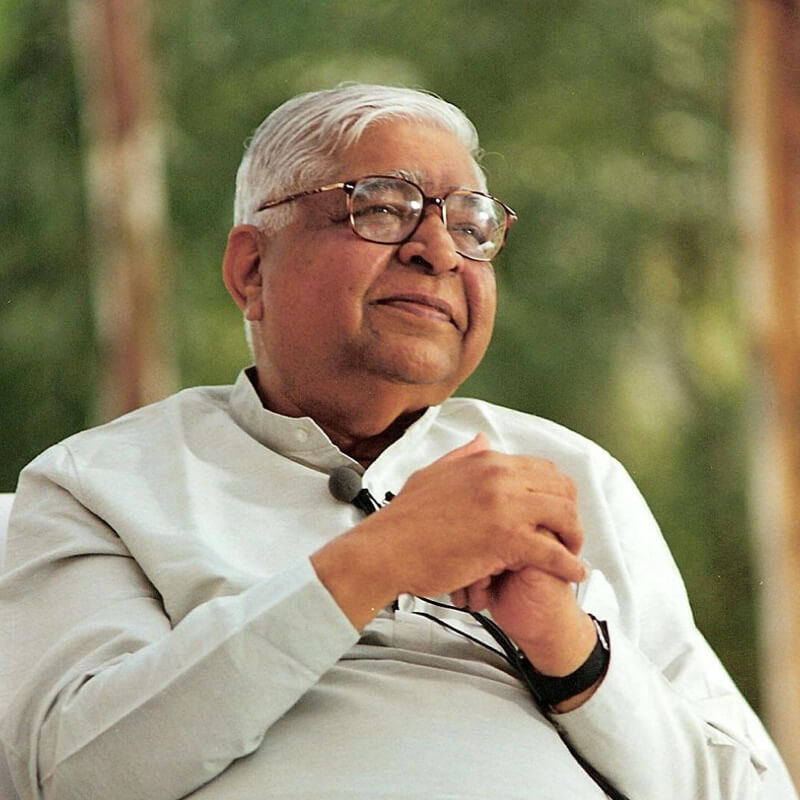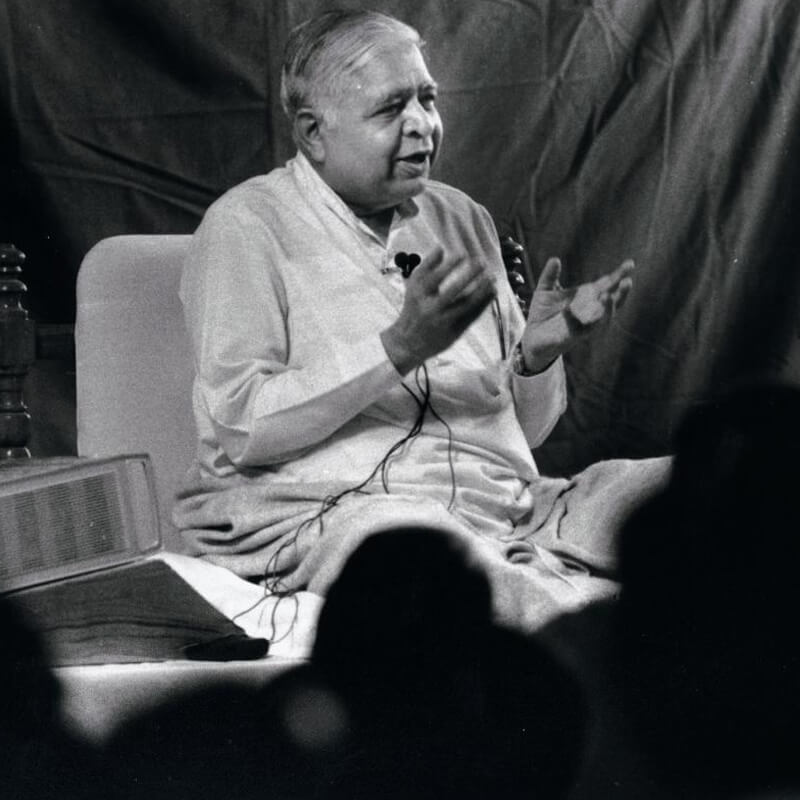If the mind is fixed upon any object, it will become absorbed in meditation, it will become still, it will achieve one-pointed concentration, but mere concentration of mind is not sammā samādhi (right concentration). For sammā samādhi, it is necessary for the mind to be wholesome, it is necessary for the mind to be untainted. Only the one-pointedness of a wholesome mind can be called kusalacitt-ekaggatā samādhi - samādhi free from defilements.
Samādhi means that the mind is established in equanimity. A mind that is focused upon an external object cannot attain equanimity; it will only disturb the balance of the mind. That is why only the concentration of a wholesome mind should be regarded as sammā samādhi.
A mind filled with craving is not wholesome, a mind filled with aversion is not wholesome, a mind filled with ignorance is not wholesome. When the mind is concentrated with the help of an object of craving, aversion or ignorance, it will achieve concentration, but it will be neither balanced nor equanimous. Such concentration of the mind is not proper, not pure, not conducive to happiness. Concentration that is dependent upon craving, aversion or ignorance is the absorption of an unbalanced mind, how can it be beneficial?
A cat with a fully concentrated mind has its full attention on a mouse-hole, it is fully engrossed in its object. A heron standing on one leg on the bank of a lake in search of fish, focusing its full attention on the water, has a completely concentrated mind. It is not aware of anything else. This is the concentration of a mind filled with craving for the mouse or fish, it is not sammā samādhi. Such a samādhi is not proper, not pure.
Similarly, a soldier lying in wait for his enemy, with his attention on the enemy's trench, has a fully concentrated mind. As soon as the enemy raises his head, he will shoot him. In the same way, a hunter with a double-barrelled gun, lying in wait for some dangerous beast, is fully attentive. His mind is fully concentrated. As soon as he sees his prey, he will fire a bullet at it. In this way, the mind is concentrated but it is not a wholesome mind; it is polluted with aversion and violence. Therefore, the concentration of such a mind is not sammā samādhi, is not pure samādhi.
A person who is in a stupor after taking an intoxicating substance becomes absorbed in intoxication and attains concentration of the mind. He is insensate like a person in a deep sleep. He is not aware of any external or internal event. Similarly, a person making use of chemicals, such as LSD, experiences hallucinations and becomes completely absorbed in them. In both these conditions, he loses the equanimity of his mind, he loses the balance of his mind. Concentration based upon an unbalanced mind, distorted by ignorance, is not meditation, is not proper samādhi, is not pure samādhi.
For the attainment of pure samādhi, an object based upon any kind of emotional fervour is not suitable. By this, the equanimity of the mind will be lost, the balance of the mind will be disturbed, the mind will become immersed in sentimentality and attachment that is full of craving. Even though the mind will become concentrated, purity will be missing.
In order to concentrate the mind, the object should be neither pleasant nor unpleasant; and for which there should be neither craving nor aversion in the mind. At the same time, the object of concentration should help to keep the mind continuously alert and protect us from getting immersed in any kind of delusion; protect us from self-hypnotism and hypnotism by others; protect us from sleep-inducing meditation.
We may become absorbed not only in the gross sensual pleasures of the outside world but also in the subtle sensory pleasures of the so-called spiritual field. But this absorption only causes bondage, not liberation. Any samādhi attained while pursuing supernatural experiences only results in bondage. The vision of any pleasing form, colour, shape, or light, seen even with closed eyes; the sound of any pleasing word or sound; the enjoyment of any pleasing fragrance; the enjoyable thrill of ecstasy caused by any pleasurable contact of the body, may enable one to concentrate the mind. But at the subtle level, these supra-sensory experiences only result in craving and the bondage of ignorance. They are not sammā samādhi which alone can take us to liberation.
Any meditator, practicing concentration of the mind on a pure object for sammā samādhi, may also experience such supra-sensual experiences. One should regard them as mere milestones, leave them behind and keep on progressing on the path. If we regard them as objects of concentration, we shall again become entangled in craving. We shall not be able to reach the ultimate stage of full liberation of the mind. Therefore, we should be alert at every stage so that we do not cling to any such object of concentration, which will become a fetter for our legs, or a wall obstructing further progress on the path.
While searching for a suitable object for the development of pure samādhi, we should also bear in mind that the object of concentration does not restrict the meditator within the bounds of any particular religion; that the object is not a form, colour, or word symbolising a particular religion, which people of other religions may find difficult to accept. This path of sīla, samādhi, paññā, and nibbāna (morality, concentration, wisdom, and liberation) is absolutely universal, and acceptable to all nationalities. Therefore, while walking on this path, the object that is chosen for attaining concentration of the mind, should be universal, eternal, and acceptable to all nationalities. It should be easily grasped by all, acceptable to all.
There are many objects of concentration that fulfil the above essential conditions. We have chosen our own incoming and outgoing breath as the object of concentration, pure incoming and outgoing breath. Pure, in the sense that no word, name, incantation, form or shape is associated with it. The practice of continuous awareness should be only on the coming in and going out of bare breath. This breath should be natural breath, normal breath. If it is long, it is long; if it is short, it is short; if it is deep, it is deep; if it is shallow, it is shallow; if it is gross, it is gross; if it is subtle, it is subtle. While taking the natural breath as our object of concentration, we should understand that we are not doing any breathing exercise. The breath is merely an object of concentration. The more natural the object, the better it is. Any interference with it will cause artificiality, which will produce an obstacle in the observation of the truth. Instead of seeing nature as it is, we will turn away from it, we will become indifferent to it.
After all, why do we practice concentration of the mind? We practice so that the concentrated mind will become so subtle and sharp that it can pierce and tear the veils that have concealed the ultimate truth of liberation. Therefore, the more natural the object of concentration, the better are the chances that we shall avoid wandering in blind alleys and instead, become established on the straight and high road of Dhamma.
Another reason for adopting natural incoming and outgoing breath as the object of concentration is that the rhythm of our respiration has an intimate natural connection with the negativities of the mind. When the mind is polluted and overpowered by any harmful negativity such as anger, fear, lust, envy or any other negativity, we see that the rhythm of our respiration naturally becomes rapid and gross. When these negativities stop polluting the mind, the rhythm of respiration becomes slow and subtle. After developing samādhi, the next step is to enter the field of paññā, where we learn to become free from the bondage of the negativities of our own mind. Therefore, the observation of the reality of the incoming and outgoing natural breath is of great help in the next step of meditation.
As we continue to observe our gross breath, the mind becomes more and more concentrated, and the breath becomes more and more subtle. Sometimes the breath will become extremely subtle, like a fine strand of hair, and as soon as it goes out, it seems to turn back inside. Sometimes it reaches a state of kuṃbhaka - a state where the process of respiration stops completely. Thus it is clear that our chosen object of concentration takes us from gross to subtle states. The unknown and unseen regions that we are likely to witness in the future are even subtler than this state, therefore, even from this point of view, the object of respiration is proper and meaningful. We have to experience the ocean of infinite waves surging within, the river of inner sensations flowing within, the eternal dance of the countless vibrations within every atom of the body. We have to witness our continuously changing nature. All of this is happening at an extremely subtle level. To reach this state, we have to first start observing the gross but ceaseless flow of respiration.
Whatever is happening within is happening effortlessly. This is the self-regulated uninterrupted flow of body and mind. To be able to observe this involuntary dynamic state of creation and destruction in the inner world, we need an object that is both a voluntary and an involuntary process, so that after observing and understanding its voluntary activity, we can start observing its involuntary activity. Respiration is the only process in the body that can be regulated, that can be made fast or slow voluntarily, but which otherwise is an involuntary, effortless process. In the journey from the voluntary to the involuntary, from the known to the unknown, from the familiar bank of the river to the unfamiliar bank, breath can act as a bridge. For this reason too, it is useful as the object of concentration.
This path of sīla, samādhi, paññā and nibbāna, on which we have started walking, takes us to those depths in the field of meditation where we can naturally realise the ultimate truth. To walk on this path, we have to start with the observation of the actual, experiential truth because the ultimate truth is the truth of this moment, not of the moments that have passed, nor of the moments that are yet to come. The moments that have passed can only be remembered; the moments that are yet to come can only be imagined or desired. Only the present moment can be experienced, not the moments of the past nor the moments of the future. Thus, for the realisation of the ultimate truth, we will have to attentively observe the gross experiential truth of the present moment. Only then will subtler truths be unveiled and transcending the subtlest state, the ultimate truth of this moment will be realised. For this, the straight royal road of our entire meditation is the practice of being able to live in the tiniest moment of the present. For the practice of living in this moment, we should learn to remain alert to the gross events occurring in the body at this moment, awareness of the incoming breath or the outgoing breath.
During this practice, we should not allow any bitter-sweet memories of the past to cast their shadows, like clouds, upon the mind. Nor should any bitter-sweet apprehension or desire about the future be allowed to cast a shadow. We should be aware only of pure breath, aware only of the actual incoming and outgoing breath. Bitter-sweet memories of the past and apprehensions and desires about the future cause craving or aversion because they are either agreeable or disagreeable. As the mind becomes free of these memories of the past and these imaginations about the future, as it becomes more and more established in this present process of the breath coming in or going out, it gains more and more freedom from craving and aversion. The mind is also released from ignorance because it is alert. While observing the incoming and outgoing breath, there is neither any agreeable feeling produced in the mind, nor any disagreeable feeling; neither attraction nor repulsion; neither craving nor aversion.
We learn to observe this natural phenomenon of the body merely as a witness. Becoming free from the bondages of the past and future, gaining release from the constraints of craving and aversion, we make our first effort to live in the present moment. This effort, similar to that of an infant trying to learn to walk on unsteady feet, and its ceaseless application in this direction, will, one day, make us worthy of completing our journey with firm, strong and steadfast steps.
Without strong sammā samādhi, we cannot enter the depth of this moment; we cannot set foot in the field of paññā. To strengthen samādhiin the right way, let us give the mind a natural, imagination-free, faultless object of this moment, which is the awareness of the incoming and outgoing breath. On the basis of this awareness, let us learn to live in the present moment. Let us develop the concentration of a wholesome mind free from craving, free from aversion, free from ignorance. Let us develop our ability to avoid unwholesome physical or vocal actions. By becoming strong in paññā and eradicating impure mental defilements, let us develop our ability to avoid unwholesome actions at the mental level.
Pure samādhi developed in this way gives happiness. Come, let us develop samādhi by practicing awareness of the incoming and outgoing breath. By strengthening samādhi, sīla will be strengthened and by strengthening samādhi and sīla, paññā will be strengthened. In the strengthening of sīla, samādhi, and paññā, lies the way to liberation: liberation from mental defilements, liberation from sorrow, liberation from delusion and ignorance.
Truly, the path of samādhi is the path of well-being, the path of good fortune, the path of peace, the path of liberation.





